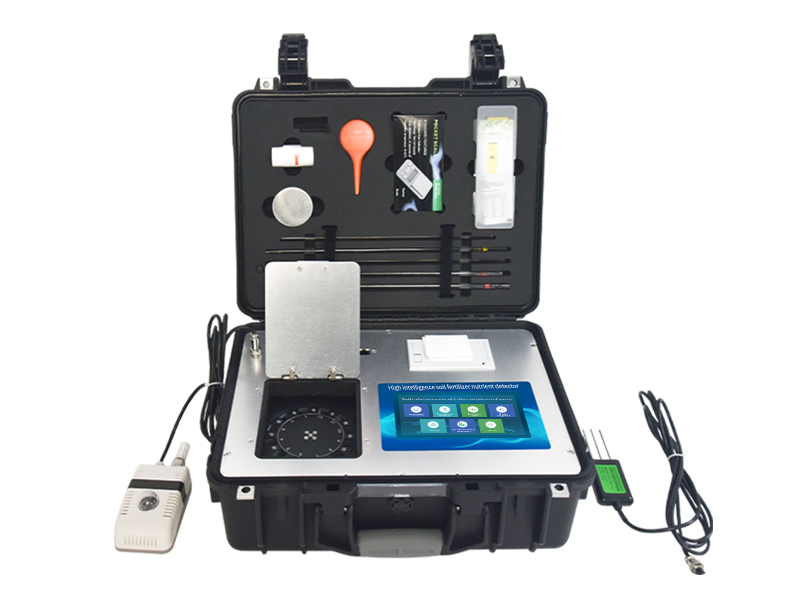Revealing The Multifunctional Advantages And Applications Of High-precision Soil Detectors.
Article Source: Hengmei Technology Release time:2024-10-08 14:40:37
With the rapid development of modern agriculture, soil
testing has become an important part of agricultural production. With its
multifunctional advantages, high-precision soil detectors provide strong
technical support for farm production and greatly improve the efficiency and
quality of agricultural output. This article will reveal the multifunctional
advantages and applications of high-precision soil detectors.
1. Multifunctional advantages of high-precision soil detectors
High-precision detection: The instrument has high-precision detection capabilities and can monitor various elements, organic matter content, pH, and other indicators in the soil in real-time. Its test results are accurate and reliable, providing detailed soil characteristic data for agricultural production.

Intelligent query: The instrument is equipped with WiFi wireless upload and GPRS wireless remote transmission functions as standard, and 4G network transmission can be configured outdoors to quickly upload data. At the same time, it is equipped with a smart cloud agricultural platform. After the instrument is connected to the wireless network, the test data can be selectively or batch-wirelessly uploaded, which is convenient for users to conduct long-term data management and visual analysis. You can use your mobile phone to log in to the cloud platform at any time to view historical data online, understand the soil nutrient content at any time, and adjust fertilizers and irrigation plans.
Rapid detection: The instrument can quickly detect and analyze the nutrients of soil samples within a few minutes, saving time and labor costs, and improving detection accuracy and efficiency.
Automated operation: The instrument uses the Android smart operating system, which has the characteristics of high automation and easy operation. Researchers only need to follow the operating prompts to make simple settings, and the instrument can automatically complete the detection process and generate a detailed detection report, which greatly reduces the workload.
2. Application of high-precision soil detectors
Agricultural production: The instrument is most widely used in agricultural production. It can provide the best fertilization suggestions according to the needs of different crops, reduce fertilization costs, and improve agricultural benefits. At the same time, by real-time monitoring of various factors in the soil, potential problems in the soil can be discovered, and corresponding treatment measures can be given in time to ensure that crops grow in the best quality soil environment, thereby increasing production.
Research field: The instrument also provides researchers with detailed soil property data. Researchers can gain an in-depth understanding of the nature and state of the soil through a comprehensive analysis of the soil, providing a scientific basis for soil improvement and utilization.
Environmental protection: The instrument can also be used in the field of environmental protection. By detecting the content of harmful substances such as heavy metals in the soil, data support can be provided for environmental governance and sustainable use of soil resources can be ensured.
In short, high-precision soil detectors, with their multifunctional advantages, provide strong technical support for agricultural production, scientific research, and environmental protection. With the continuous development of technology, it is believed that high-precision soil detectors will play a more important role in the future.
Address of this article:https://www.kjhm.net/news/671.html
 Related News
Related News
-
12 / 2024-11
Unlock the Secrets of Photosynthesis with Portable Photosynthesis Meter.
Learn more
-
21 / 2025-11
Rice Heavy Metal Detector ( HM-FZ1) Product Knowledge Graph White Paper
Learn more
-
20 / 2025-10
Programmable Quantitative Sealer for Enzyme Substrate Method Water Testing
Learn more
-
16 / 2025-09
Total Phosphorus Analyzer: Essential for Water Quality and Environmental Monitoring
Learn more



 Current
Location:
Current
Location:





